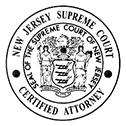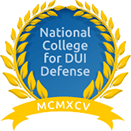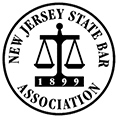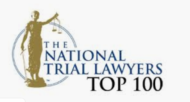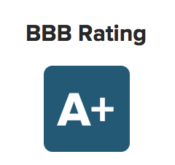FN4. There are always applications of a general rule that strain its outer limits. When does operation take place? In State v. Roberts, 139 Me. 273, 29 A.2d 457 (1942), the intoxicated motorist who was operating the engine of a vehicle being towed up an icy incline was found to be operating the motor vehicle even though his front wheels were extended in the air by a tractor. In Commonwealth v. Clarke, 254 Mass. 566, 150 N.E. 829 (1926), a motorist who manipulated a gear lever of a car standing on a downgrade so that it moved slightly through the operation of the law of gravity was found to have operated the car. In Commonwealth v. Uski, 263 Mass. 22, 24, 160 N.E. 305, 306 (1928), the court held that a motorist who intentionally made use of “any mechanical or electrical agency which alone or in sequence would set the motor power in action,” was “operating” the car. These are hard lines to draw, and like the lines drawn in State v. Stiene, 203 N.J.Super. 275, 496 A.2d 738 (App.Div.1985), and State v. Jeannette, 172 N.J.Super. 587, 412 A.2d 1339 (Law Div.1980), do not evoke uniform response.
*479 As we noted at the outset, this case requires line-drawing on a very difficult set of facts. If defendant had turned the key in the ignition, an intent to drive would have made him an operator. Does it make sense to say that he is not operating when the circumstances are so nearly identical?
[2] “[W]e are dealing with law enforcement efforts designed to curb one of the chief instrumentalities of human catastrophe, the drunk driver.” State v. Grant, 196 N.J.Super. 470, 476, 483 A.2d 411 (App.Div.1984). The New Jersey Legislature had in mind the prevention of accidents when it enacted its drunk-driving legislation. We believe that it would want to include within its regulatory program drivers like defendant. We therefore believe that when one enters a car and puts one’s self in the driver’s seat, that person is in control of the car and an intention to drive the vehicle, combined with physical movements to put the car in motion, constitutes operation, at least sufficient to warrant an arrest for purposes of submission to the sobriety test required by N.J.S.A. 39:4-50.4a.
In State v. Wright, 107 N.J. 488, 527 A.2d 379 (1987), also decided today, the Court holds that probable cause to believe a person has been operating a vehicle is sufficient **375 to require that person’s *480 submission to a breathalyzer test. As we noted earlier, in this case the municipal court appeared to premise its result on such a suspicion. The municipal court reasoned as follows: the car was on the sidewalk and the defendant must have driven it there; since the defendant was plainly drunk, the defendant must have driven the car onto the sidewalk while drunk. Hence, it found probable cause to arrest existed. But the officers had no evidence at the time of the arrest as to when the car got there, and there was thus no reasonable basis for the conclusion that the defendant drove the car onto the sidewalk while intoxicated. Therefore, the issue in this case must be resolved in the context of what the officers saw when the defendant exited the tavern, not what they suspected. What did that observed conduct connote; did it connote operation?
The respected Judge Price, in State v. Sweeney, 77 N.J.Super. 512, 520, 187 A.2d 39 (App.Div.1962) aff’d, 40 N.J. 359, 192 A.2d 573 (1963), stated that attributing a broader construction to the word operate, in the context of drunk driving, “represent[s] the more reasonable approach.” Acts of physical control of a car’s machinery (there turning the ignition switch) “justif[y] the inference that [the driver] intended to take the next step in the operation of the car-to put the vehicle in motion.” 77 N.J.Super. at 520-21, 187 A.2d 39 (citing Annotation, 47 A.L.R.2d 570 (1956)). We believe that the Legislature intended that law enforcement “should not have to wait until a potential danger is a real one, when they see actions such as these occur.” State v. Jeannette, supra, 172 N.J.Super. at 592, 412 A.2d 1339.
[3] This case obviously represents the outer limits of accepted police practice. The encounter was coincidental and the officer was required to make a split-second choice with limited alternatives. We share the concern of the dissent about possible misapplication of the principle, and we therefore hasten to add that in order for an officer to require a driver to submit to a breathalyzer test, the officer must have probable cause to believe that operation has occurred or presently is occurring. *481 This decision does not give license to require persons to submit to breath tests because of the probable relief that they will operate a motor vehicle at some time in the near future. Those circumstances are totally unrelated to these and we shall continue to trust the sound judgment of our municipal court judges in whom the grave responsibility for enforcing this legislative scheme has been reposed. We reemphasize that, in circumstances such as these, such a sobriety test may be required under the statute only of a person properly suspected of being under the influence who is in actual physical control of a vehicle and has started to place the car’s machinery in operation, intending to drive it on a public way.
III.
Because of the disposition that we make, we need not address the legal theory by which the Appellate Division sustained the defendant’s conviction of drunken driving. That court, although believing that the defendant had not been shown to have operated the motor vehicle in the officer’s presence and that the defendant was thus not subject to the legal arrest that is predicate for the breath test, nonetheless sustained the conviction for operating the motor vehicle while under the influence on the basis of the evidence presented by the juvenile witness and the admitted insobriety of the defendant.
[4] It is a troublesome question indeed, whether the defendant was fairly apprised that a charge was made against him for operation before he entered the tavern considering that the summons specified the time of the offense as 10:00 p.m., which was approximately the time of the arrest as he left the tavern. In view of the confused procedural posture of the case and the tactics of trial counsel for the defendant, it is difficult for us to evaluate the merits of the argument on that issue now advanced by appellate counsel, who did not participate in the trial strategy. As it appears to us now, that trial strategy circumvented the necessity that any additional **376 inferences be drawn by *482 the municipal court in order to sustain a conviction for drunk driving. We agree with the view of the Appellate Division that an illegal arrest taints only the evidence that is the product of the arrest; it does not necessarily taint an entire prosecution. Cf. State v. Sugar, 100 N.J. 214, 495 A.2d 90 (1985) (violation of right to counsel would preclude admission of any evidence that flowed from violation).
A court in the normal course of a drunk driving proceeding, not as constrained in its inquiry as this one, would inquire whether the witness’ evidence would have been forthcoming in any event or whether it was the product of a tainted arrest. At that point the trial court could conform the charges to the evidence provided there was no surprise or prejudice to the defendant. R. 3:7-4; see State v. Talley, 94 N.J. 385, 466 A.2d 78 (1983) (defendant having been charged with robbery could not claim surprise or prejudice in having to defend against charge of theft by deception where statute put defendant on notice that any conduct denominated as theft was within four corners of robbery indictment). But see State v. Roenicke, supra, 174 N.J.Super. 513, 417 A.2d 54 (not proper to amend drunk driving charge to reckless driving because to do so would deprive defendant of the opportunity to prepare and defend against the new charges).
However, as noted here, the entire legal contest was over whether the defendant’s conduct constituted operation sufficient to require submission to a breathalyzer test. That the municipal court articulated its judgment of conviction of drunk driving on the basis of the operation of the vehicle witnessed by the young man does not detract from the effect of the stipulation. We cannot recreate this trial in a way that the parties did not. At the Superior Court trial de novo, the defendant made it clear that he was not contesting the drunk driving conviction on any basis other than the validity of the arrest. His attorney emphasized that “[t]his case rises or falls on, Judge, whether or not Patrolman Macchio saw Mr. Mulcahy operate the vehicle.” *483 We have resolved that issue against defendant. The remaining results flow from the stipulation below.
The judgment of the Appellate Division is reversed, insofar as it reverses defendant’s conviction of violation of N.J.S.A. 39:4-50.4a (refusal), and affirmed insofar as it affirmed defendant’s conviction of violation of N.J.S.A. 39:4-50 (drunk driving).
CLIFFORD, J., dissenting.
Defendant, Eugene F. Mulcahy, was convicted of operating a motor vehicle while under the influence of intoxicating liquor, in violation of N.J.S.A. 39:4-50(a), and of refusing to submit to a breathalyzer examination, as called for by N.J.S.A. 39:4-50.4a. The Appellate Division affirmed the drunk driving conviction but reversed the “refusal” charge. State v. Mulcahy, 202 N.J.Super. 398, 495 A.2d 166 (1985). The Court upholds the driving-while-intoxicated charge, and, reversing the Appellate Division in part, reinstates the conviction for refusal to submit to the chemical test. I would hold both convictions invalid, and therefore dissent.
The Court treats the critical issues as having been presented in hypothetical form. Ante at 369. I do not read the record that way. The case was tried the way any other “real, live” case is tried, with the defense stipulating identification and intoxication at the time of arrest, leaving it to the State to prove operation. Nothing extraordinary about that. And nothing to suggest the fanciful hypothesis gratuitously adopted by the Court, ante at 369 that defendant “stagger[ed] out of Bondy’s Tavern” and otherwise exhibited symptoms of insobriety.
Rather, the following evidence was adduced as related by the Appellate Division in support of its affirmance of Mulcahy’s drunk-driving conviction:
According to the State’s proofs at approximately 7:30 p.m. * * * Sean Dunay, a 15-year old boy, was standing near Bondy’s Tavern when he saw defendant “driving down Piermont” Road in Cresskill toward Demarest. Dunay testified that as defendant attempted to pull into **377 a driveway “right by Bondy’s … he missed pulling into the driveway and came up on the curb and hit his license plate.” Dunay testified that after hitting the curb defendant pulled away from the curb, pulling off his “license plate half way” so that “it was hanging on by one screw.” Defendant proceeded down the street, “stopped for a while in the middle of Piermont and then just pulled away and drove away.” Dunay further testified that at approximately 9:30 p.m. that same evening he saw defendant again. This time, according to Dunay, defendant “came from the direction of Tenafly,” parked by Jolly Nick’s, which is next to Bondy’s Tavern, and after getting out of his car staggered across Piermont.
At approximately 9:45 p.m. Officers Macchio and McLaughlin of the Cresskill Police Department arrived at the area of Bondy’s Tavern. Officer Macchio testified that defendant’s car was parked on a sidewalk which was not a parking area. He observed defendant approach the car, enter the car, and take the car key in his right hand. As defendant “started to make his way towards the ignition,” Officer Macchio “intercepted the keys from his hand.” At that point Officer Macchio arrested defendant for driving under the influence of intoxicating liquor in violation of N.J.S.A. 39:4-50. As indicated both on the summons and in the testimony of Officer Macchio this arrest occurred at approximately 10:00 p.m.
[202 N.J.Super. 401-03, 495 A.2d 166 (footnote omitted).]
*484 As I see the case, defendant was not “operating” his vehicle at the time he was charged with drunk driving, wherefore that charge must fall. And because the arresting officer could not, for the same reason, have had probable cause to believe that defendant had been driving while drunk, the conviction for refusal to submit to a breathalyzer test likewise cannot be sustained.
I
At the outset I acknowledge that I approach the issues on this appeal with a view that some might legitimately perceive as primitive. I still believe, as I did in State v. Daly, 64 N.J. 122, 313 A.2d 194 (1973), that a conviction for operating a motor vehicle while under the influence requires a demonstration that the vehicle was “in motion on the roadway.” Id. at 126, 313 A.2d 194 (concurring opinion). I agreed then, as I do now, with Justice Francis’s dissenting position in State v. Sweeney, 40 N.J. 359, 192 A.2d 573 (1963).
The source of Justice Francis’s disagreement with the Court in Sweeney was the majority’s holding that a person “drives” a stationary motor vehicle while under the influence of intoxicating liquor, within the meaning of the drunk-driving statute, *485 “when, in that condition, he enters a stationary vehicle, on a public highway or in a place devoted to public use, turns on the ignition, starts and maintains the motor in operation and remains in the driver’s seat behind the steering wheel, with the intent to move the vehicle * * *.” Id. at 361, 192 A.2d 573. Justice Francis, after meticulously picking over the legislative history, reached the conclusion that “[a] stationary vehicle is not being operated in the sense required for conviction; nor was the purpose of the act to make proof of an unexecuted intent to drive (operate) sufficient to convict of the offense specified therein.” Id. at 367, 192 A.2d 573 (Francis, J., dissenting). Said he:
We are dealing here with a quasi-criminal legislative enactment which visits serious consequences upon those who transgress it. The fact that all of us are aware of the hazards presented by drunken automobile drivers on the highways should not drive us from the normal view that penal statutes call for strict construction. Conduct should not be declared criminal unless it is plainly within the terms of the lawmakers’ condemnation.
In my judgment “operates” in the Motor Vehicle Act context is and was used as synonymous with “drives.” The word connotes and requires movement of the **378 car on the highway before violation occurs.
* * *
I am convinced the lawmakers and other officially-interested persons regarded “operate” as interchangeable with “drive.” There is no reasonable support in the legislative history for the view that an immobile automobile is being driven or operated by a person who [as was the case in Sweeney ] seats himself behind the steering wheel and does no more than start the motor.
[Id. at 362-63, 192 A.2d 573 (Francis, J., dissenting) (emphasis added).]
The foregoing position, I concede, has not exactly swept through the body of case law on this subject like wildfire, having been adopted only by Justice Francis in Sweeney and Justice Pashman and me in Daly. It may be a trifle antediluvian, a quaint relic the proponents of which are to be indulged, maybe gently humored, but surely not followed; but the fact remains that no matter what tests for “operating” the lower courts may have concocted, this Court has invariably required as a bare minimum of “operation” of a stationary vehicle that its engine have been started. See State v. Daly, supra, 64 N.J. at 125, 313 A.2d 194.
*486 So for me today’s case is an a fortiori proposition: defendant had not even put the key in the ignition, much less started the car. And if we are going to start drawing new lines for operation-here, when defendant’s hand, with the key enclosed, is on its way toward the ignition-what about when defendant puts his hand on the driver’s door handle? Or when he approaches the car? Or when he departs from the saloon? Or when he gets off the bar stool? It reminds me of nothing so much as the chaos we created for ourselves in the bad old days of the worker’s compensation “going and coming” rule, see, e.g., Briggs v. American Biltrite, 74 N.J. 185, 376 A.2d 1231 (1977); Paige v. City of Rahway, Water Dep’t, 74 N.J. 177, 376 A.2d 1226 (1977); Wyatt v. Metropolitan Maintenance Co., 74 N.J. 167, 376 A.2d 1222 (1977); Watson v. Nassau Inn, 74 N.J. 155, 376 A.2d 1215 (1977), from which the legislature has mercifully granted us deliverance. See N.J.S.A. 34:15-36; Cressey v. Campus Chefs, 204 N.J.Super. 337, 343, 498 A.2d 1274 (App.Div.1985).
Here the defendant was charged with an offense on October 7, 1983, at 10:00 p.m. (that is the time written on the summons) at “Piermont Rd., Cresskill” (again, the place written in by the officer in the appropriate box for “location”). This information is followed by the printed legend: “And did then [10 p.m.] and there [Piermont Rd., Cresskill] commit the following offense(s):,” after which the Officer Macchio inserted “driving under the influence.” That is the charge-not drunk driving between 7:30 and 9:45 p.m., for which the municipal court judge found defendant guilty, and apparently-but not clearly-as agreed to by the Superior Court on trial de novo on the record. As for the Appellate Division, it in effect simply amended the charge without acknowledging as much, because it concluded that defendant “had been fairly apprised that he was charged with driving while under the influence and that charge included his driving the motor vehicle to the place where he parked it on the sidewalk and was subsequently arrested.” 202 N.J.Super. at 405, 495 A.2d 166. And as for this Court, I think-but I am not certain-that what it is saying is that in fact defendant was *487 convicted of driving under the influence before he entered Bondy’s, see ante at 375; that in fact the summons specified the time of offense as 10:00 p.m. after he left the tavern; and that in fact this little-umm-disharmony presents “a troublesome question indeed,” ante at 375, but no matter, because “the entire legal contest was over whether the defendant’s conduct constituted operation sufficient to require submission to a breathalyzer test.” Ante at 376. It is difficult to be critical of that conclusion because I do not understand it.
What I do understand is that the arresting officer conceded that he arrested defendant and charged him with drunk driving at 10:00 p.m. based exclusively on his own observations at the scene-not on any **379 other information from young Dunay or any other source. Because I am satisfied that defendant did not operate his vehicle at 10:00 p.m., and because defendant was not charged with driving under the influence at any earlier time, I would reverse the judgment of conviction for drunk driving.
II
On the “refusal” charge, the elements that must be proven include, in addition to defendant’s refusal to submit to the breathalyzer test, an arrest for drunk driving (surely that must mean a legal arrest, not simply a taking into custody), and, if we get over that one, a demonstration that “the arresting officer had probable cause to believe that the person had been driving * * * while under the influence * * *.” N.J.S.A. 39:4-50.4a. Given my view of the “operation” issue and Officer Macchio’s admissions, I would conclude that the arresting officer did not have probable cause to believe that defendant had been driving at ten o’clock while under the influence. See State v. Wright, 107 N.J. 488, 527 A.2d 379 (1987), also decided today. I would therefore affirm the Appellate Division’s judgment reversing the defendant’s conviction on the “refusal” offense.
*488 III
One final word by way of reassurance. This opinion should in no way be read as reflecting any insensitivity to the mayhem that can be visited on innocent people by drunks behind the wheel. I believe that I have demonstrated elsewhere my understanding of that problem and of the judiciary’s proper role in addressing it. See, e.g., State v. Milligan, 104 N.J. 67, 68, 514 A.2d 1316 (1986) (dissenting opinion). Nor should what I say today be taken as any criticism of the law-enforcement people involved-they would have been derelict had they not intercepted defendant, as his counsel is quick to admit-or of the young witness, Dunay, and his parents, who supported his courage and laudable purpose in coming forward to give information and in testifying. But the legislature has not yet created an offense akin to, say, an “attempt” to operate a motor vehicle while under the influence (although it has, of course, denominated as “criminal” a whole category of offenses generally falling under the heading of “criminal attempt,” see N.J.S.A. 2C:5-1); and until it does so, I shall adhere to my position in this case and Daly.



